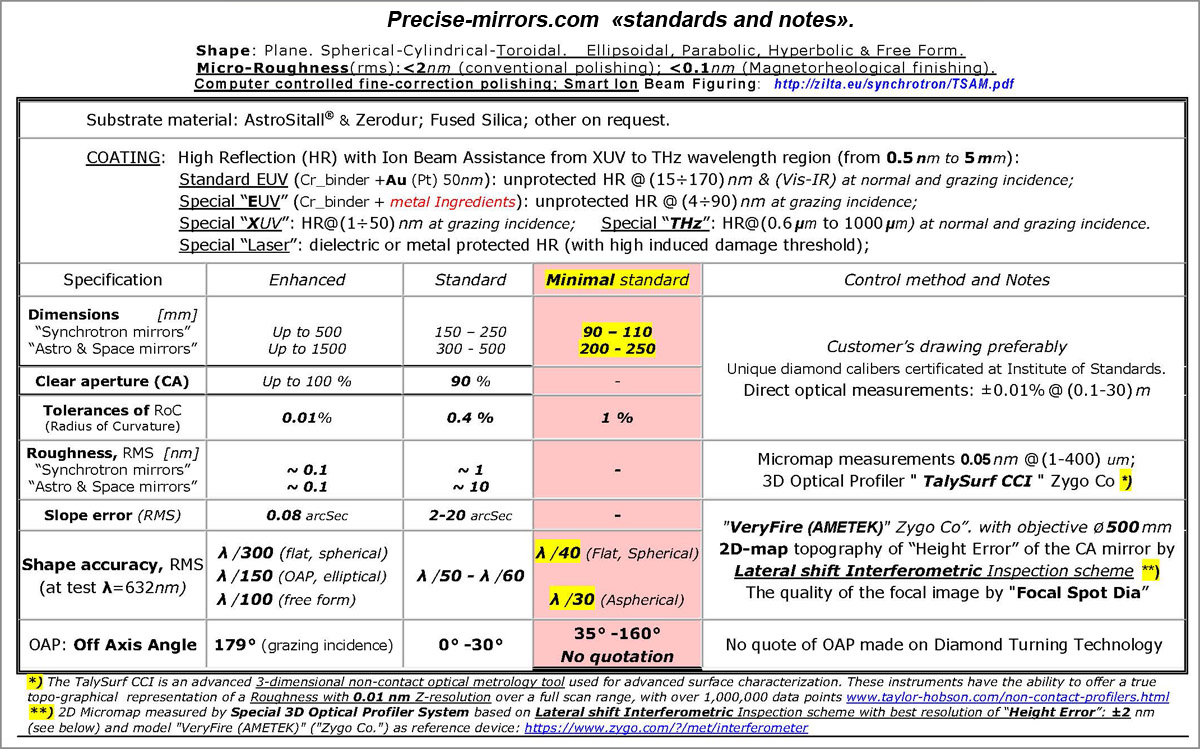
A ellipsoidal mirror is part of the surface of ellipsoid, usually a part of prolate ellipsoid of revolution (like a rugby ball).

Ellipsoidal
mirrors are often used when
customer works in short spectral wavelength
range
with standard task
to focus the radiation incident on the mirror at a large
AOI (about 60-89 degrees).
.
The advantage of
ellipsoidal mirrors is complete absence of spherical aberrations and, accordingly,
the possibility of obtaining a diffraction-limited spot in any configuration.
The disadvantage of ellipsoidal mirrors is higher cost and longer delivery terms.
Usually, it is very important for the customer how small a spot in the image plane can be formed by the mirror (see the figure below).

The
spot size in the image plane for ellipsoidal
mirror depends on tolerance of the mirror surface shape
manufacturing and
diffraction limitations at the operating wavelength.
The general principle is that the closer the spot size to the diffraction limit, the more expensive the mirror is.
|
What are the minimal mirror parameters do you need to know to order?You need for Your working spectral range:
A). decide on a combination of S,
S' and AOI (see the picture above,
here
pdf help guides); |
You
may send your request in any form,
but to speed up the process of preparing a quote, it is better to fill out a special "request
form".
You
may send additional data for the mirror
(mirror substrate material, tolerance of mirror
surface figure, ellipse parameters and etc.).
